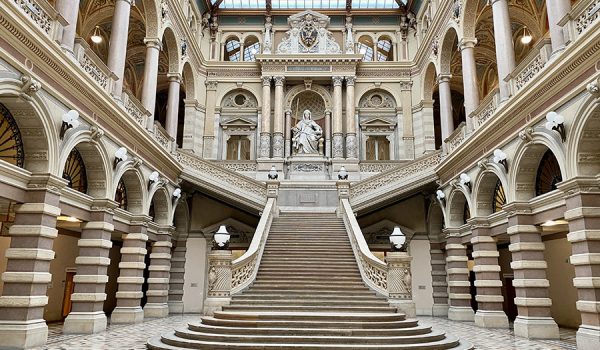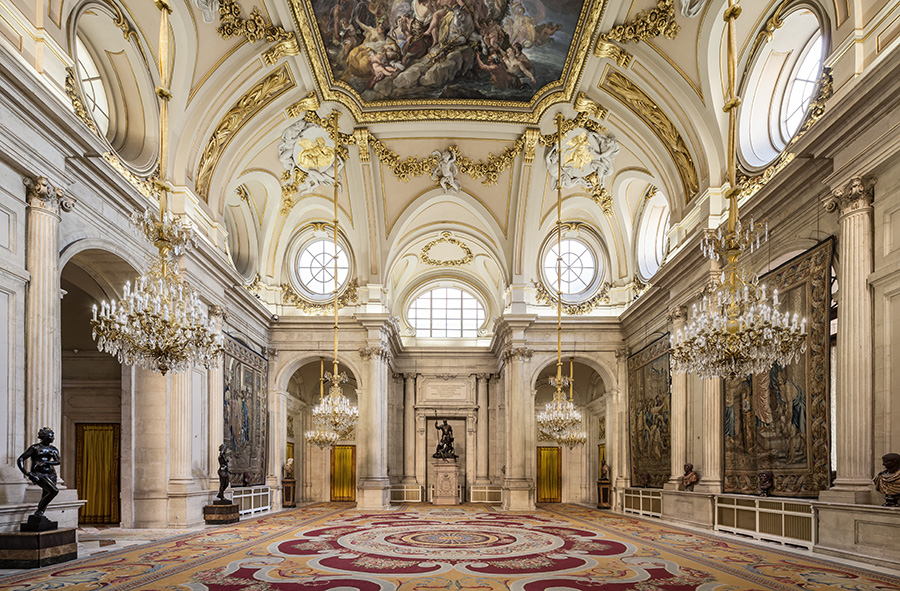Vienna is one of the most popular European destinations thanks to its vast artistic and cultural heritage and more. There are so many things to do and see — the list is practically endless — so my suggestion would be to choose the places to visit according to your interests.
Unusual Vienna: the 8 hidden gems to discover
For this trip to the Austrian capital I decided to create an itinerary including less known places: museums, civic buildings, panoramic spots and churches.
The efficient Vienna public transport allowed me to get around the city centre and its surroundings quickly. Then, thanks to the Vienna City Card with 72 hours validity, I was able to travel for free for the entire duration of my stay.
8 unusual things to do in Vienna: visit the Palace of Justice and its panoramic terrace
Located a five-minute walk from the MuseumQuartier, one of the largest cultural areas in the world and stretching along the western ‘border’ of the Old Town, the Palace of Justice – Justizpalast in German – is an architectural gem unknown even to many Viennese inhabitants.
Erected between 1875-1871 by Austrian Emperor Franz Joseph I, it was damaged during World War II. A series of major restoration works in 2007 restored the building to its former glory.

The Palace of Justice is the current seat of the Supreme Court and is accessible free of charge for visitors during office hours, from Monday to Friday from 8.30 a.m. until 4 p.m. (approximately).
After passing through the entrance controls, you get to the majestic inner lobby overlooked by the gallery. The lift takes you up to the fifth floor where you will find the Justiz Cafe, with its beautiful, freely accessible roof terrace.

From here you can enjoy one of the best view of Vienna and it is possible to easily distinguish the bell towers of St. Stephen’s Cathedral and St. Michael’s Church, the dome of St. Peter’s Church and the Prater Giant Ferris Wheel on the horizon.
To discover other 6 viewpoints scattered throughout the city have a look at this article of my blog.
The nearest underground station to the Palace of Justice is “Volkstheater” (line U3), alternatively you can take tram 46 and get off at “Schmerlingplatz” directly in front of the building.

8 unusual things to do in Vienna: walk along the Passage Freyung
This is an elegant gallery linking Freyung and Herrengasse Streets via the Ferstel Palace, built in the second half of the 19th century. According to the original plan, access to the “passage” was to be of limited duration, but things turned out differently as the covered street became the common meeting place for members of Vienna’s high society.
Today, the Freyung Passage is still a popular destination thanks to the presence of several shops and cafés like for example the Cafe Central, one of the most famous in Vienna.
The closest metro station is “Herengasse” (line U3) or you can take the A1/2A buses.
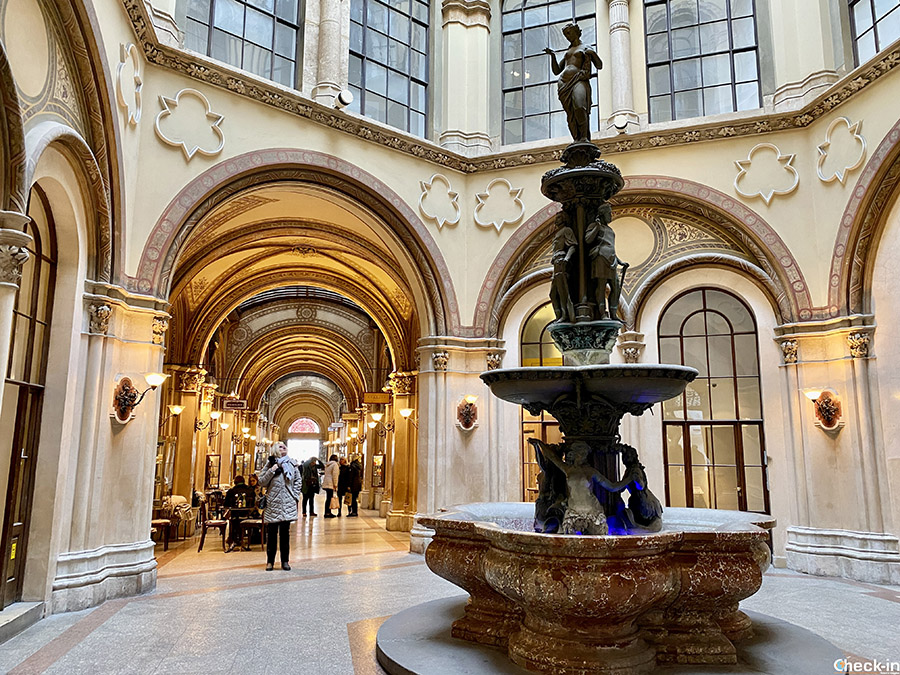
8 unusual things to do in Vienna: visit some lesser-known churches
In the same area there are three churches not so popular among tourists but with interesting history facts to discover.
The Schottenkirche
The Abbey of Our Lady of the Scots is the oldest monastery in Vienna as it dates back to 1155, when Count Henry II of Austria invited Irish Benedictine monks to the city. Inside you can appreciate the Baroque decorations and stuccoed vaults.
But what does this temple have to do with Scotland?
At that time, the Latin expression for Ireland was “Scotia Major” and, consequently, Irish monks were called “Schotten” in German.
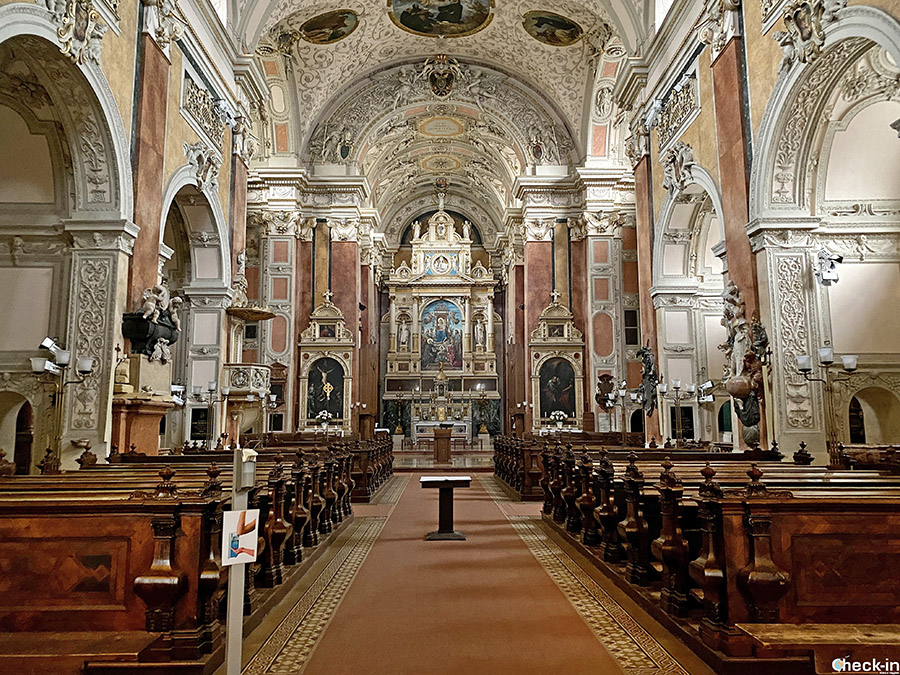
The Minoritenkirche and The Last Supper
Since 3 June 1784 it has been owned by the Italian Congregation and is dedicated to Our Lady of the Snow.
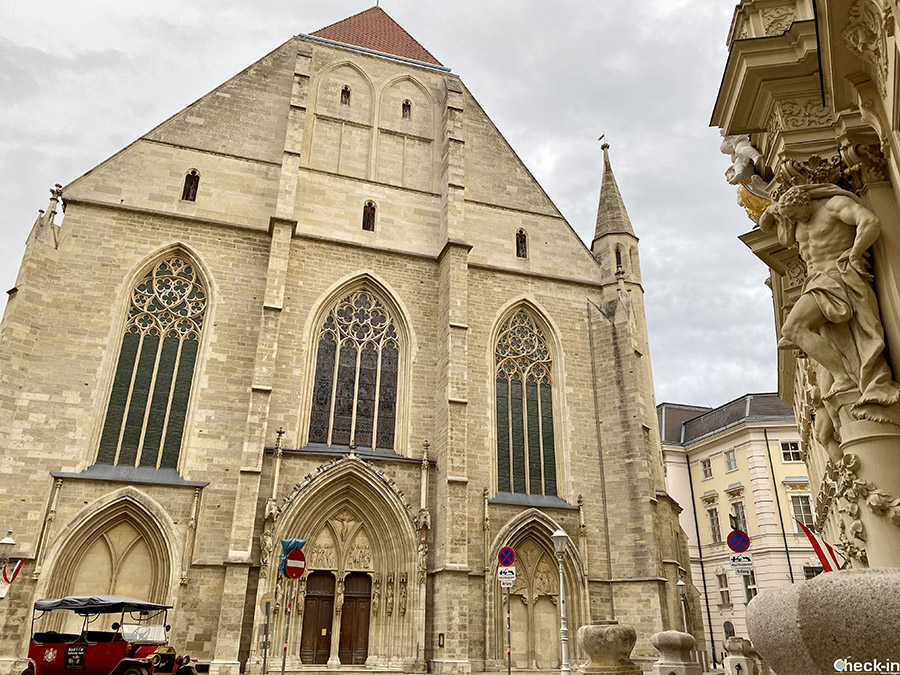
Today it is still the religious, cultural and social centre of the Italian community in the Austrian capital as well as one of the oldest and most artistically valuable churches in Vienna. As proof of this, along the left side aisle you can contemplate the mosaic version of Leonardo da Vinci’s Last Supper!
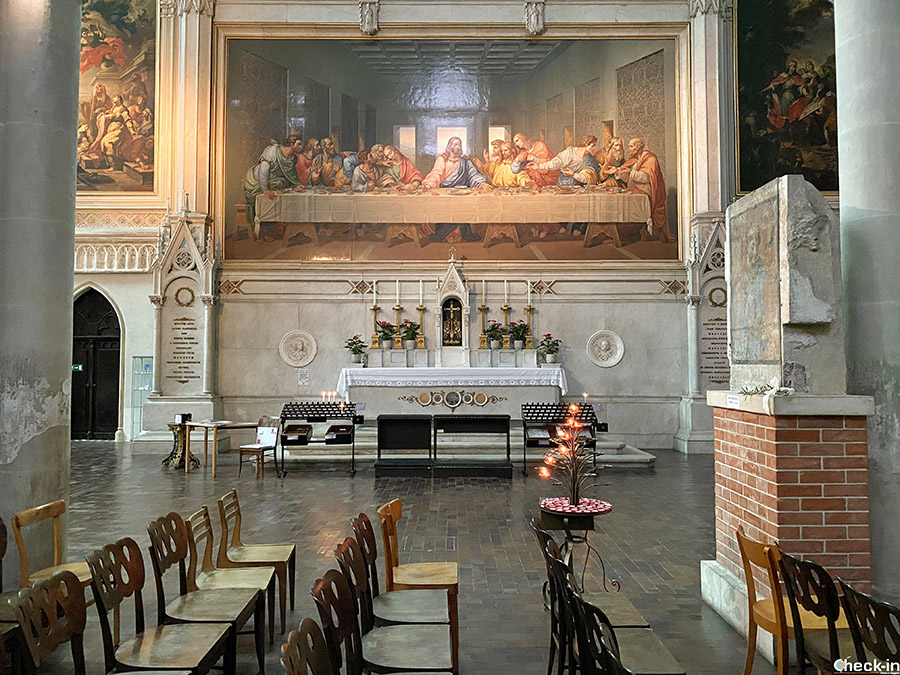
The Michaelerkirche
Just a few steps away from the Spanish Riding School and the Imperial Treasury stands St. Michael’s Church. The building is famous for two main reasons.
The first is the presence of the crypt, where around 4.000 people are buried, including Pietro Metastasio, the man who wrote librettos for Mozart’s operas. And, speaking of the Austrian composer, the Church of San Michele is known because it was here that the world premiere of his last opera, the “Requiem”, took place shortly after his death.
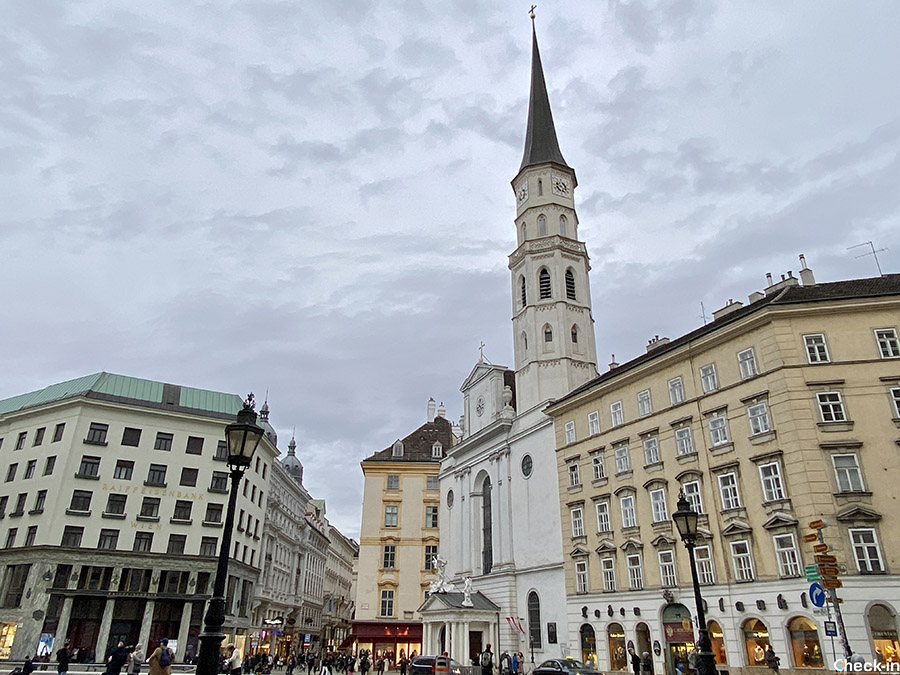
8 unusual things to do in Vienna: visit the Sigmund Freud House-Museum
At 19 Bergasse Street, north of the city centre, there is the house where Freud lived and worked from 1891 to 1938.
Here the father of psychoanalysis wrote his most famous works, among them the “Interpretation of Dreams”, revolutionising the scientific method and leaving a legacy that is still discussed today. In addition, meetings of the newly founded Psychological Society were held in the consulting room.
Freud family moved to London in June 1939 following the annexation of Austria by Nazi Germany and brought much of the furniture with them. However, thanks to major restoration work carried out in 2020 visitors can now visit all the private rooms also including his study.
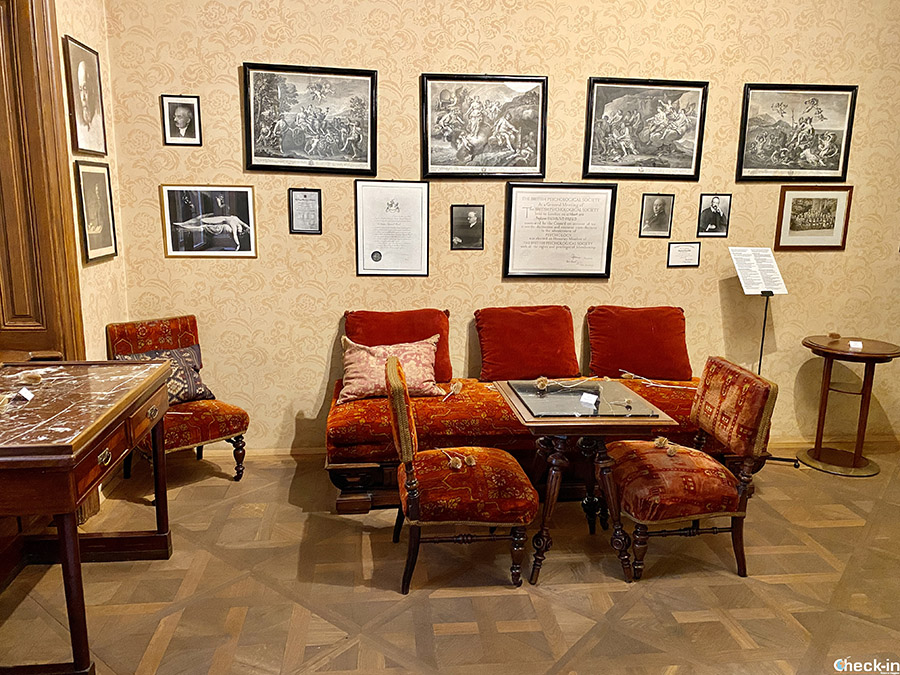
The atmosphere of that time has been preserved and even the entrance to the museum itself is something unique. In fact, people have to ring the bell just as the psychoanalyst’s patients did.
Each room has been set up with photographs and information panels that allow you to see how the rooms looked with their original furnishings.
There is also a collection of Freud’s books and personal items, such as his business cards, letterheads, the plaque of his Vienna office, letters sent to Einstein in 1933 and a copy of the first edition of the book “Interpretation of Dreams”.

The museum also hosts an exhibition focused on the influence of Freud’s thought on art, in particular on the exponents of Surrealism. And so, to my surprise and delight, I was able to see some of Dalí’s works such as the “Portrait of Freud” and the sketch of the “Metamorphosis of Narcissus”.
Is it worth visiting the Freud Museum in Vienna?
I read on internet several old and negative reviews, mainly referring to the lack of the original furnishings.
If I may agree on this point, I have to say the new look of the museum after the 2020 renovation works offers a better and comprehensive experience as the exhibition space has been increased whilst the atmosphere of Freud’s time has been finely preserved.
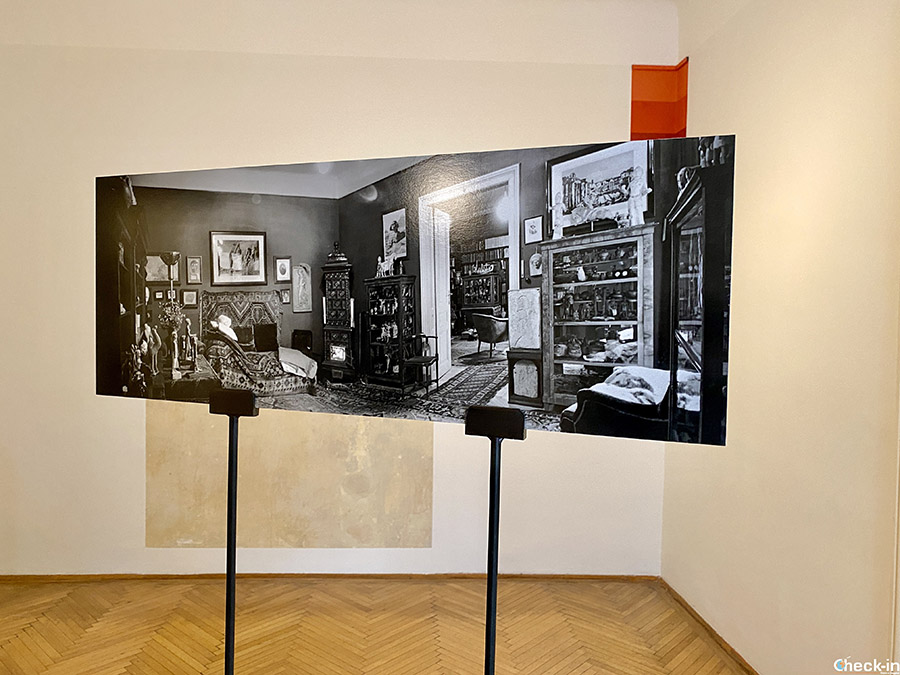
I studied the basics of psychology at university days and then read the “Interpretation of Dreams” for personal enjoyment, so for me the visit was engaging and I spent a couple of hours there. I would probably not consider it a museum for everyone but, in my personal opinion, it is a must for scholars and enthusiasts of psychology.
Vienna City Card holders are entitled to a discount (to be shown at the ticket office) while entrance is free with the Vienna Pass.
To get there by public transport, the nearest stops are Berggasse (bus 40A) and Schlickgasse (tram D).
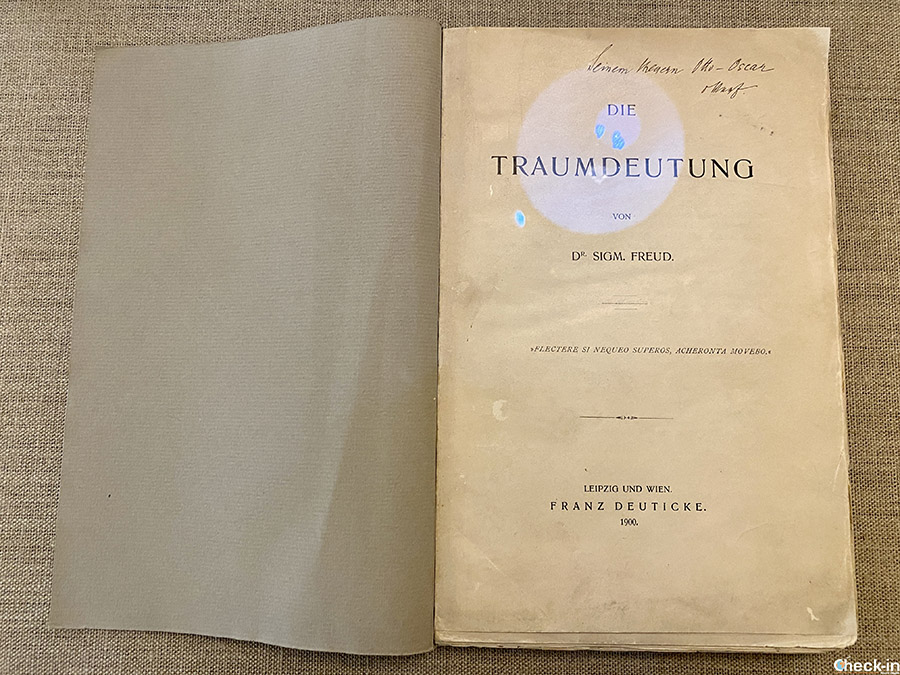
8 unusual things to do in Vienna: fall in love with the colours and architecture of the Gaudí-style HundertwasserHaus
In the third district of Vienna, east of the city centre, lies a popular area that in recent years has been attracting more and more tourists and especially those wo are keen on urban design.
This because of Friedensreich Hundertwasser, artist and pioneer of sustainability in architecture.
His masterpiece is the “Hundertwasserhaus”, a residential complex designed between 1983-1985 that stands out for its colours, the more than 200 trees and shrubs planted on the balconies and the curved lines inspired by the forms of nature.

The façade immediately reminds of Casa Battló in Barcellona. Unfortunately Hundertwasserhaus cannot be visited.
On the other side of the street is the Hundertwasser Village, a small shopping centre also created by the Austrian artist between 1990-1991 and comprising a covered square, a café and few craft shops.
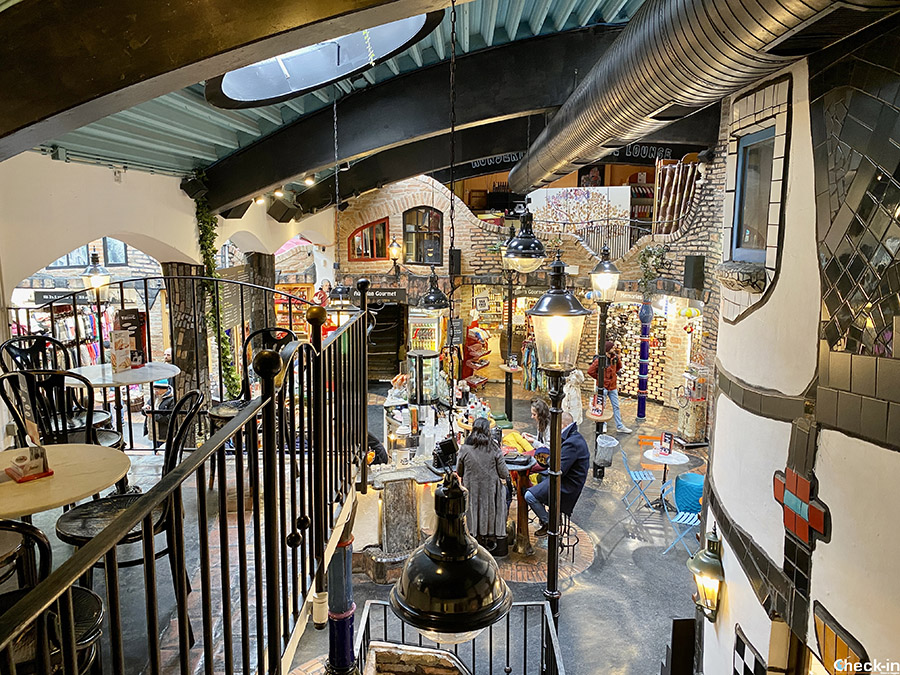
A five-minute walk away is the Kunst Haus Wien, opened in 1991 and dedicated to the works of Hundertwasser. The building also hosts temporary exhibitions as well as a meeting space for creatives and artists discussing sustainability, climate change, recycling and the quality of life in the city.
Take pictures inside is not permitted.
The façade is an integral part of the Hundertwasser Museum as it consists of glass, metal, brick and wood elements as well as colourful ceramic tiles.
Visiting the Kunst Haus is free for Vienna Pass holders, while City Card holders receive a 30% discount.
If you are in the area at lunchtime, I suggest Kolonitz Beisl, a historic inn where you can eat traditional viennese dishes at reasonable prices (cheaper than in the city centre). More information on where to eat in Vienna are available in this article of my blog.

8 unusual things to do in Vienna: “entering” the Kugelmugel Republic
In the heart of the Prater, overlooking the Hauptallee boulevard about 200 metres from Vienna’s famous Giant Ferris Wheel, there is a curious spherical-shaped house.
Its story begins in 1971 in the village of Katzelsdorf in Lower Austria. Here, the artist Edwin Lipburger built a spherical house with a diameter of 8 m without any permit claiming that his was not a permanent dwelling.
Condemned to ten years in jail, Lipburger avoided his conviction thanks to the intervention of the Austrian president. Then, in 1976, he declared the independence of his “Republic of Kugelmugel” (from Kugel=ball and Mugel=hill). Obviously, the new state was never recognised by any international organisation and since June 1982 its new location is at Prater, by order of the Austrian government.
Today’s address is Antifaschismusplatz 1, an open space so renamed by the artist himself and bordered by a metal fence topped with barbed-wire. A sign placed in the corner celebrates the figure of this democratic revolutionary in his “struggle against traditional morality and all kinds of corruption”.
The Kugelmugel Republic is easily reachable by train, underground (lines U1-U2) and tram (line O) getting off at “Praterstern”.

8 unusual things to do in Vienna: surprise yourself looking at the Church of St. Francis of Assisi
A few steps away from the Danube shore, north-east of Vienna city centre, stands a building that resembles a castle which actually is a place of worship for the English-speaking Catholic community.
The Church of St. Francis of Assisi has a massive four-nave structure and towers up to 73 m high. The simplicity of the interior contrasts sharply with the majesty of the exterior, which can be appreciated in all its splendour by crossing Mexikoplatz square.
To arrive here you have to get off at the underground station “Vorgartenstraße” (line U1) and walk about 5 minutes.
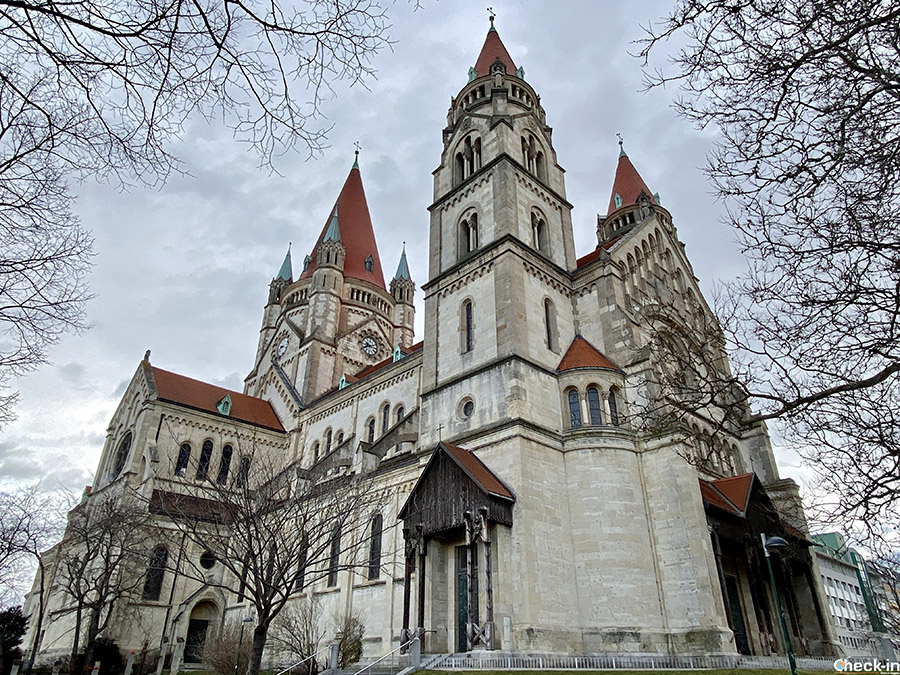
8 unusual things to do in Vienna: visit the Habsburg tombs
Back to the heart of Vienna historic centre, a five-minute walk from St Stephen’s Cathedral, to visit the Capuchin Church. It is famous for housing the Imperial Crypt in its basement, which was intended for 150 members of the former Austrian ruling House of Habsburg.
It was Empress Anna of Tyrol who wanted a burial site for her and her husband, Emperor Matthias II, to be built a short distance from the Hofburg complex. The initial construction, dating back to 1617, was then gradually extended to receive other members of the dinasty.
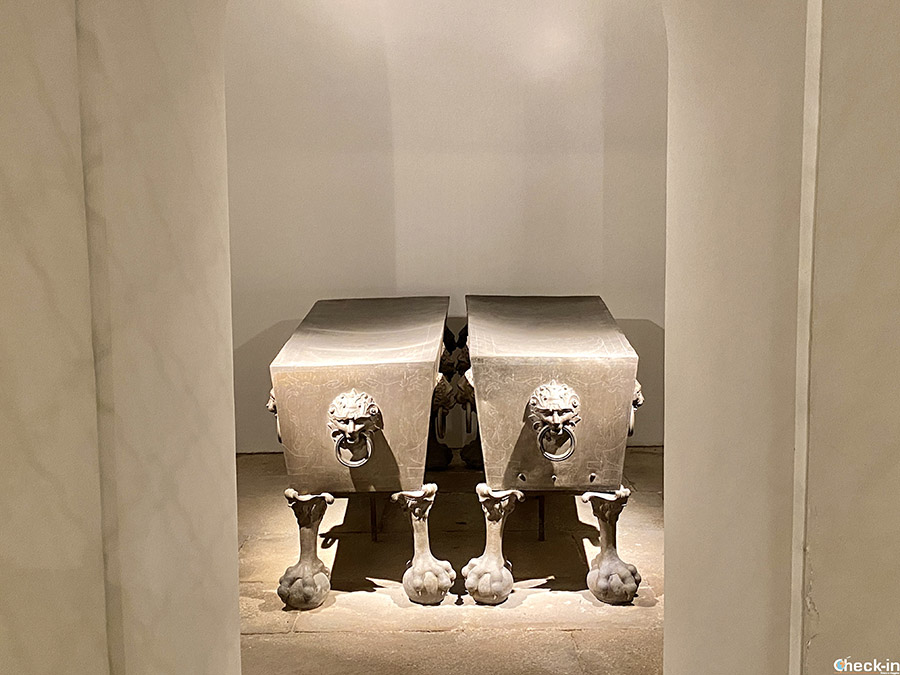
Also known as the Capuchin Crypt (Kapuzinergruft), emperors, empresses, kings and queens are buried here since 1633 and until 2011. In that year there was the burial of Otto Habsburg, the eldest son of Zita, the last Austrian empress who passed away in 1989.
A visit to the Mausoleum is a real journey back in time as every tomb tells the story of the lives and deaths of those who lie there, including several children who died prematurely and women who died of childbirth complications.
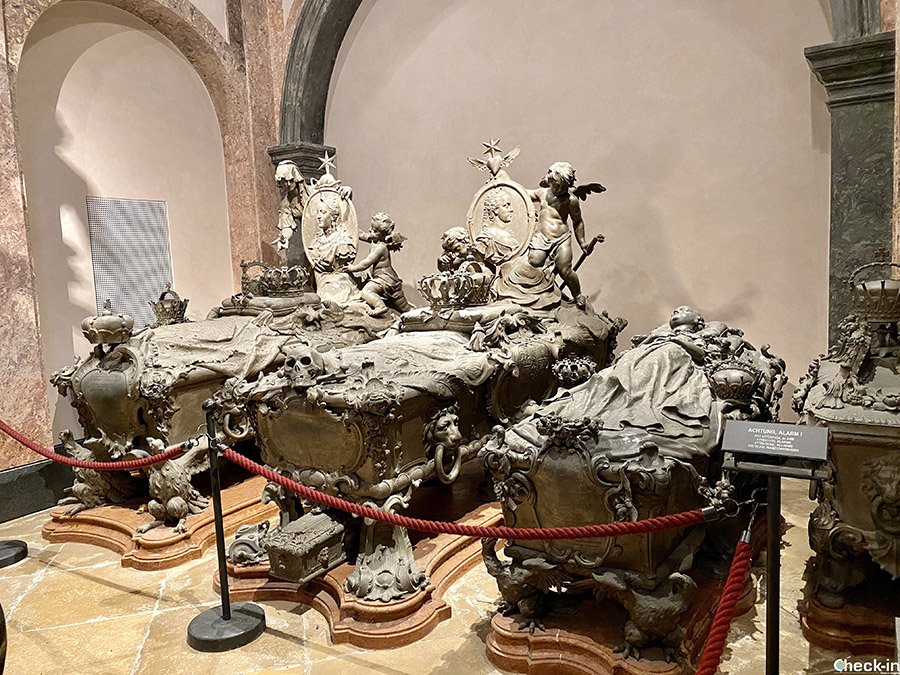
The most famous tomb is undoubtedly that of Elisabeth of Bavaria, Empress Sisi, buried in the crypt of Franz Joseph I alongside her husband and her son Rudolf.
Admission tickets can be purchased online, with free cancellation available up to 24 hours before the visit. Visitors with a valid Vienna City Card get a 19% discount otherwise with Vienna Pass you get free admission.
The nearest metro station tothe Capuchin Church is “Stephansplatz” (lines U1-U3).

The best activities to do in Vienna
BeIow you find the list of some of the most popular attractions and activities not to be missed in the Austrian capital:
- Belvedere Superiore and Klimt’s Permanent Collection, including the famous masterpiece “The Kiss” with priority admission guaranteed by choosing the desired time slot;
- Ride on the Prater Giant Ferris wheel, with skip-the-line entrance;
- Vivaldi’s “The Four Seasons” concert in the Karlskirche;
- All-Inclusive ticket for St. Stephen’s Cathedral, with full visit and access to catacombs, museum, north and south towers and audioguide included;
- CAT train transfer, the fastest way to reach the center of Vienna from the airport in just 16 minutes;
- Panoramic view from the Danube Tower, offering the best sight of Vienna;
- Entrance ticket to the Kunsthistorisches Museum (Museum of Art History);
- Albertina Museum, permanent collection of modern art with works by Monet, Picasso, Degas, Renoir and Chagall;
- Mozarthaus, with audioguide included;
- Vienna City Card (24, 48, 72 hours or 7 days), free public transport and discounted tickets to museums and attractions;
- Vienna Pass (1, 2, 3 or 6 days), free admission to all attractions and unlimited travels on Hop-on Hop-off tourist buses.

